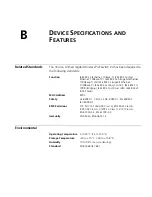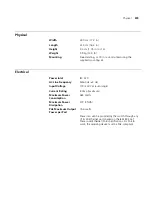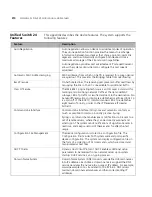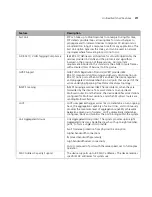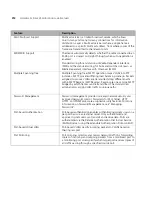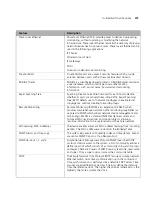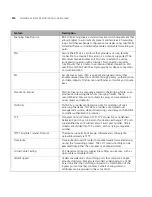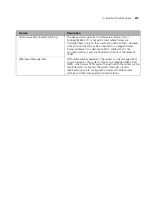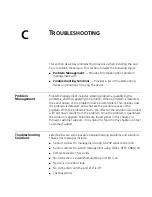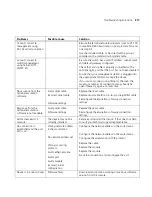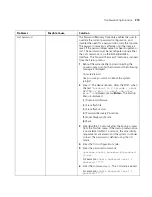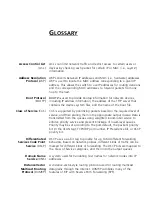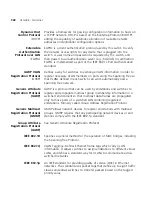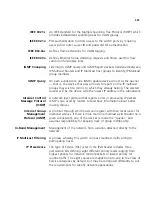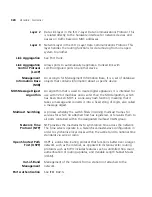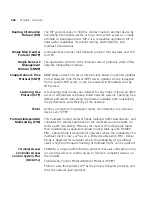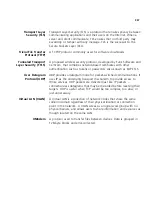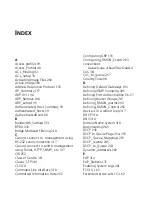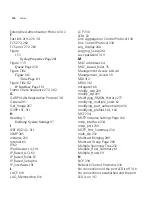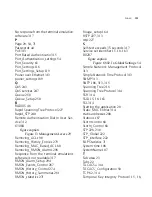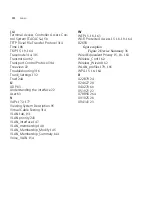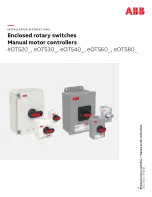
322
A
PPENDIX
: G
LOSSARY
Dynamic Host
Control Protocol
(DHCP)
Provides a framework for passing configuration information to hosts on
a TCP/IP network. DHCP is based on the Bootstrap Protocol (BOOTP),
adding the capability of automatic allocation of reusable network
addresses and additional configuration options.
Extensible
Authentication
Protocol over LAN
(EAPOL)
EAPOL is a client authentication protocol used by this switch to verify
the network access rights for any device that is plugged into the
switch. A user name and password is requested by the switch, and
then passed to an authentication server (e.g., RADIUS) for verification.
EAPOL is implemented as part of the IEEE 802.1x Port Authentication
standard.
GARP VLAN
Registration Protocol
(GVRP)
Defines a way for switches to exchange VLAN information in order to
register necessary VLAN members on ports along the Spanning Tree so
that VLANs defined in each switch can work automatically over a
Spanning Tree network.
Generic Attribute
Registration Protocol
(GARP)
GARP is a protocol that can be used by endstations and switches to
register and propagate multicast group membership information in a
switched environment so that multicast data frames are propagated
only to those parts of a switched LAN containing registered
endstations. Formerly called Group Address Registration Protocol.
Generic Multicast
Registration Protocol
(GMRP)
GMRP allows network devices to register end stations with multicast
groups. GMRP requires that any participating network devices or end
stations comply with the IEEE 802.1p standard.
Group Attribute
Registration Protocol
(GARP)
See Generic Attribute Registration Protocol.
IEEE 802.1D
Specifies a general method for the operation of MAC bridges, including
the Spanning Tree Protocol.
IEEE 802.1Q
VLAN Tagging—Defines Ethernet frame tags which carry VLAN
information. It allows switches to assign endstations to different virtual
LANs, and defines a standard way for VLANs to communicate across
switched networks.
IEEE 802.1p
An IEEE standard for providing quality of service (QoS) in Ethernet
networks. The standard uses packet tags that define up to eight traffic
classes and allows switches to transmit packets based on the tagged
priority value.
Summary of Contents for 3CRUS2475 24
Page 137: ...Defining LAG Membership 137...
Page 139: ...139 Defining Voice VLAN Defining GVRP...
Page 194: ...194 CHAPTER 9 CONFIGURING IP INFORMATION Static Indicates the ARP entry is a static entry...
Page 197: ...Defining ARP Interface Settings 197 Unchecked Maintains the current ARP entries...
Page 321: ...320 APPENDIX C TROUBLESHOOTING...
Page 329: ...328 APPENDIX GLOSSARY...

